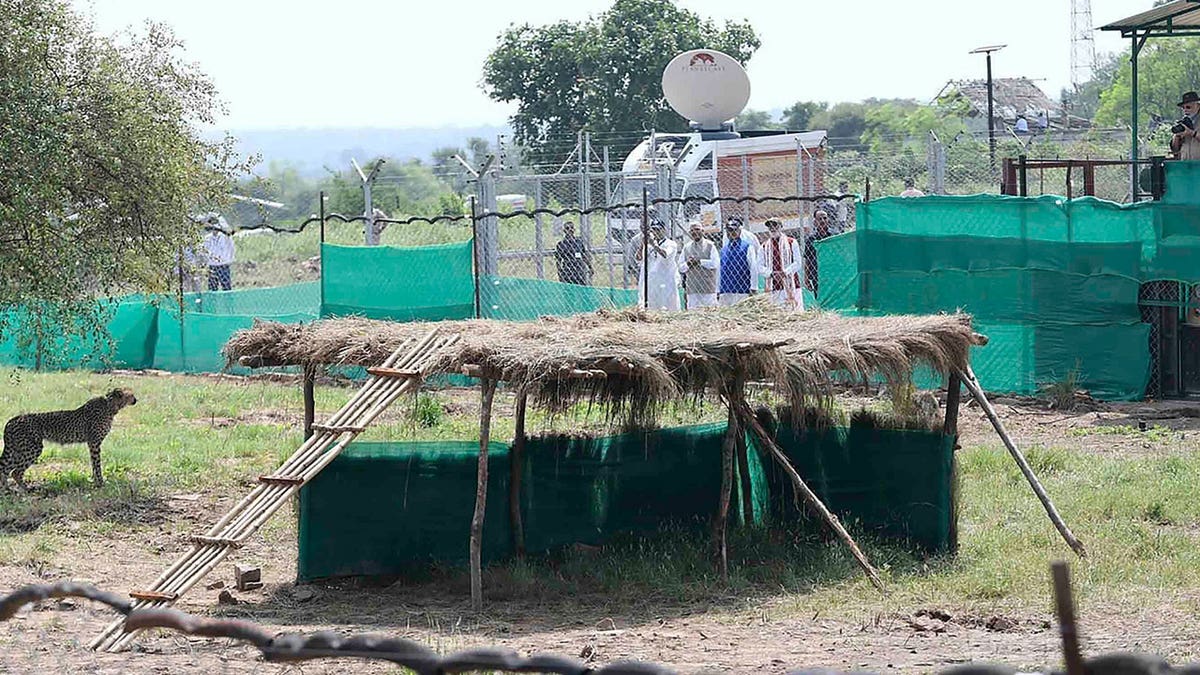The demise of an eighth cheetah in India's Kuno National Park has sparked renewed concerns about the project's viability. Just ten months after the reintroduction of these big cats, the initiative, controversial from the outset, is facing intense scrutiny.
Veterinarians from South Africa, closely involved with the project, attribute the most recent death to an infection stemming from the cheetah's radio collar, exacerbated by the humid conditions in central India. However, the Indian government dismisses these claims as "speculation." Previous cheetah fatalities have been linked to various causes, including maggot wounds, dehydration, infighting, kidney disease, and the loss of three out of four cubs born earlier this year.
Following another suspected infection-related death last week, authorities are attempting to tranquilize the remaining cheetahs for health assessments. Local media indicate similar infections in other animals.
A South African veterinary wildlife specialist integral to the relocation expressed concerns about the project's management, alleging that veterinary expertise was disregarded until recently. Adrian Tordiffe claims a shift occurred after the February dismissal of Y.V. Jhala, the Indian scientist who spearheaded the reintroduction program. Tordiffe asserts that subsequent communication breakdowns hindered timely diagnosis and potentially endangered other cheetahs. While the Indian environment ministry maintains regular consultation with international experts, Tordiffe reports improved communication in recent days. Experts emphasize the crucial need for ongoing collaboration with African specialists, acknowledging the challenges of cheetah relocation and population establishment.

Doubts about the project's feasibility arose even before the cheetahs' arrival last September, with experts questioning their survival prospects in India. Subsequent deaths and instances of cheetahs straying from the park have further fueled these concerns. Critics argue that India's grassland conservation policies are insufficient, prioritizing iconic species like tigers and elephants over grasslands and their dependent species. Some experts view the cheetah project as a diversion from more pressing conservation needs, highlighting the plight of critically endangered species like the Great Indian Bustard and other grassland-dependent wildlife.
The chosen national park was initially intended for the relocation of Asiatic lions from Gujarat's Gir forest, a move long advocated by scientists concerned about the isolated population's vulnerability. Some suspect the cheetah project is delaying this crucial lion relocation. A 2013 Supreme Court order mandated the lions' transfer to Kuno National Park, deeming the cheetah introduction arbitrary, illegal, and in violation of wildlife protection laws. The lions remain in Gujarat, and relocation plans are under review.
Despite the setbacks, Tordiffe remains optimistic about the cheetah project, acknowledging that some fatalities are inevitable. He stresses the need for improved active management, believing success is still attainable. With fewer than 7,000 adult cheetahs remaining globally, inhabiting less than 9% of their original range, the project's long-term goal is a population of at least 500, requiring the annual transfer of a dozen animals from South Africa. However, experts emphasize the need for at least 4,000 square kilometers of suitable habitat before further introductions, significantly larger than the current Kuno National Park's 748 square kilometers. Learning from past experiences is crucial to prevent further losses and ensure the project's success.








